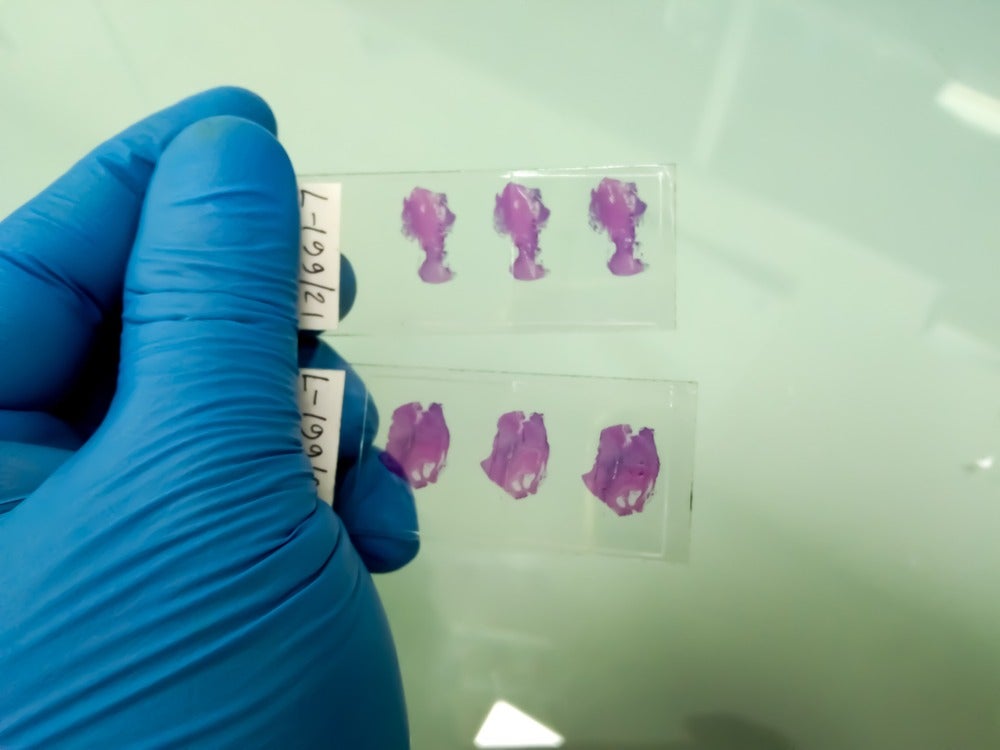
A new tool created through collaboration between an AI medical startup and a university is the first in the prediction of genomic subtypes of pancreatic cancer from histology slides.
The RNA profile of a pancreatic cancerous tumour can be used in the prediction of its behaviour, as it influences levels of inflammation and proliferation, as well as cell differentiation pathways – the route one cell takes to become another type of cell.
AP-HP Greater Paris University Hospitals, the European clinical trial centre with the largest amount of healthcare research data in France, and Owkin, a startup harnessing AI for medical research and clinical development, created the tool, which uses deep learning models to identify pancreatic adenocarcinoma molecular subtypes.
Owkin chief scientific officer and co-founder Gilles Wainrib said: “Our research shows AI can help connect information at the genomic, cellular and tissue levels, and how doing so can bring immediate value to make precision medicine a reality for patients.
“This study further underscores the value of using machine learning for identifying histo-genomic signals for cancer research and clinical development.”
The two organisations announced the recent results of their ongoing strategic collaboration at the American Society of Clinical Oncology conference held yesterday in Chicago, Illinois.
Why it’s difficult to predict the path of pancreatic cancer without AI
Pancreatic adenocarcinoma is a complex and heterogeneous type of cancer.
According to the two organisations behind this new tool, improvement of prognosis has stalled while pancreatic cancer is predicted to become the second most lethal cancer by the year 2030.
They said heterogeneity and tumour plasticity – the ability of cancer cells to adapt to gain therapeutic resistance, cause tumour relapse and metastasis – are likely major factors in the failure of many clinical trials.
Multiomics studies have revealed two main tumor transcriptomic subtypes, Basal-like and Classical that have been proposed to be predictive of patient response to first line chemotherapy.
The determination of these subtypes has been possible so far by RNA sequencing, a costly and complex technique that is not yet feasible in a clinical routine setting.
How AI can be beneficial
Taken together, the collaborators believe the above factors make it compelling to use advanced AI methods with common histological slides, trained alongside crucial context from expert researchers, to address the unmet needs of patients.
Professor Jérôme Cros, pathologist at Beaujon Hospital, Université de Paris, said: “This tool was developed using the unique histological and molecular resources from four APHP hospitals (Amboise Paré-Beaujon-Pitié Salpétrière-Saint Antoine) though a unique collaboration between pathologists from APHP, bioinformaticians from the group Carte d’Identité des Tumeurs de la Ligue Contre le Cancer and data scientists from Owkin.
“It can remotely subtype tumours in minutes, paving the way for many applications, from basic science (study of intra-tumour heterogeneity) to clinical practice (tumour subtyping in clinical trials).”
In August of 2020, Owkin published its novel predictive AI tool HE2RNA for RNA-sequencing expression from whole slide images in Nature Communications and it became one of the top 50 most widely read papers of 2020 in the journal.
These findings were born out of close collaboration with Prof. Julien Calderaro, anatomo-cyto-pathologist at Henri-Mondor hospital, AP-HP.
According to Owkin, the AI prediction tool can be applied to all types of cancer, and it laid the groundwork for the histo-transcriptomic findings of the recent pancreatic adenocarcinoma tool.



